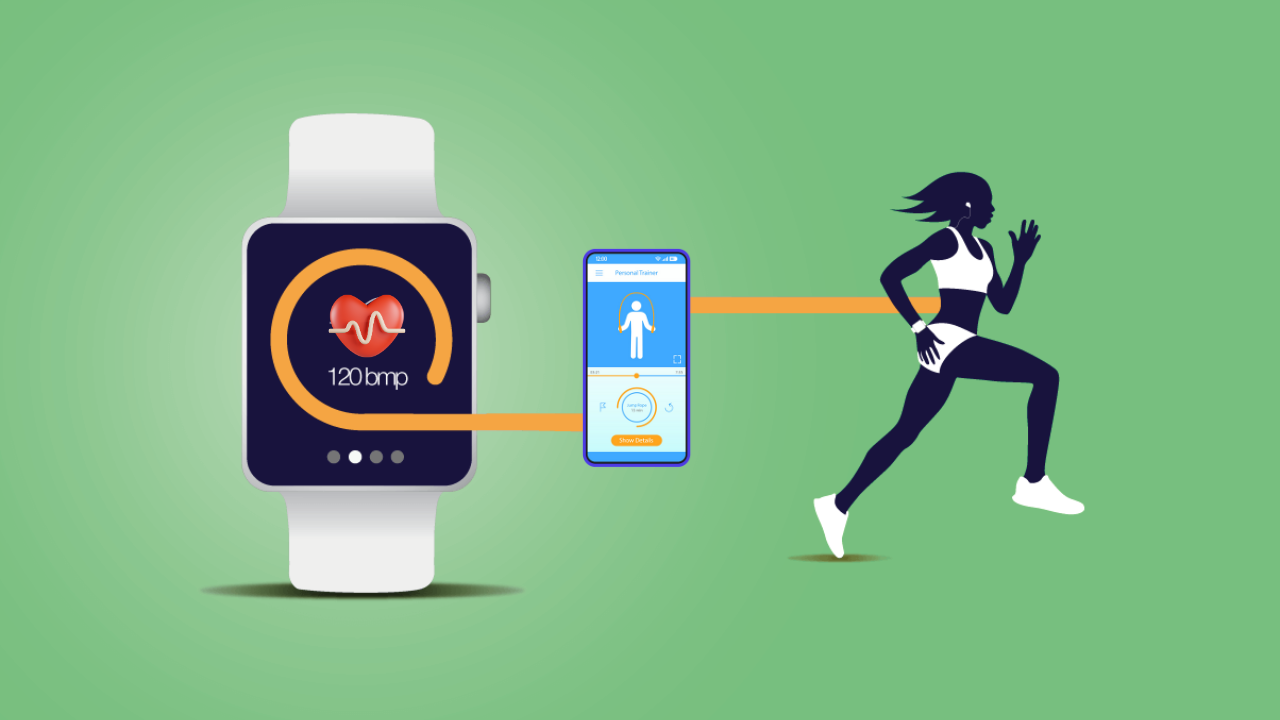
Wearable technology has come a long way. Today, a roaring industry with developments is changing how we live, work, and collaborate with the world. We will examine the most recent advancements, potential applications, and the impact these devices have on various aspects of our lives in this comprehensive guide to the future of wearable technology.
The Development of Wearable Innovation
The excursion of wearable innovation started with basic gadgets like pedometers and pulse screens. However, a significant shift occurred with the introduction of fitness bands and smartwatches, making wearable technology widespread. These gadgets could even make phone calls, send notifications, and track various health metrics.
As of late, the wearable tech industry has extended past wellness and health. Smart glasses, smart clothing, and even wearable medical devices are now available to us. This development is driven by propels in innovation, scaling down of parts, and expanded purchaser interest for more coordinated and customized tech arrangements.
Health and Fitness Monitoring

Monitoring one’s health and fitness is still at the forefront of wearable technology, according to current trends. Comprehensive health tracking capabilities are provided by smartwatches like the Apple Watch, Fitbit, and Garmin. They even look for irregular heartbeats and monitor sleep patterns, oxygen levels, and heart rate. These gadgets assist clients with remaining fit as well as give basic wellbeing bits of knowledge that can prompt early analysis and mediation.
Wearable Medical Devices
Medical Devices That Can Monitor Chronic Conditions and Provide Real-Time Health Data to Medical Professionals Wearable technology is revolutionizing healthcare. Models incorporate nonstop glucose screens (CGMs) for diabetes the board and wearable ECG screens. By reducing the need for frequent doctor visits and enabling proactive health management, these devices improve patient outcomes.
Expanded Reality (AR) and Savvy Glasses
Savvy glasses and AR gadgets like Google Glass and Microsoft HoloLens are tracking down applications in different enterprises. They provide surgeons with real-time data during operations in the healthcare industry. They give workers hands-free access to manuals and instructions in manufacturing. As AR innovation improves, we can anticipate more vivid and useful applications.
Smart Clothing and Textiles

Textiles and Clothing with Smart Sensors Smart textiles contain sensors that can monitor a variety of physiological parameters. Clothing that tracks muscle activity, heart rate, and breathing patterns has been developed by companies like Hexoskin and Athos. This innovation is especially helpful for competitors hoping to streamline execution and for patients requiring constant well-being checking.
Wearable Installments
The reconciliation of installment innovation into wearables is making exchanges more advantageous. Contactless payments are supported by the Samsung Galaxy Watch and Apple Watch, allowing customers to make purchases with a single wrist tap. As more retailers adopt contactless payment systems, this trend is likely to expand.
The Future of Wearable Technology

The Future of Wearable Technology As we look to the future, the wearable technology landscape is likely to be shaped by several significant developments:
Advanced Health Monitoring The capabilities of future wearables for health monitoring will be even more advanced. We hope to see gadgets that can identify a more extensive scope of medical issues, from beginning-phase tumors to neurological problems. These wearables will be outfitted with additional complex sensors and man-made intelligence calculations to give exact and noteworthy well-being experiences.
Integration seamlessly with the IoT The Internet of Things (IoT) will become increasingly integrated with wearable technology. Imagine a world in which your smartwatch communicates with smart home devices to adjust the temperature according to your body temperature or to unlock your vehicle as you approach it. A lifestyle that is more connected and convenient will result from this level of integration.
Improved Battery Life and Sustainability Battery life is one of the issues with wearable technology. Power management systems that are more effective and even energy-harvesting technologies are likely to be included in future wearables. Furthermore, there will be a more prominent spotlight on maintainability, with producers utilizing eco-accommodating materials and cycles.
Improved Wearable Technology User Experience Through Artificial Intelligence (AI) and Machine Learning Artificial intelligence (ML) will significantly contribute to the improvement of the wearable technology user experience. Wearables will be able to learn from user behavior and provide more personalized and predictive insights thanks to these technologies. A smartwatch, for instance, could anticipate the onset of a migraine and recommend preventative measures.
In addition to health and fitness, wearable technology will see greater adoption in entertainment, education, and workplace safety sectors. Through interactive and immersive content, wearables can enhance educational experiences. They can provide novel experiences with media and games in the entertainment sector. In working environment wellbeing, wearables can screen laborers’ wellbeing and climate to forestall mishaps.
Challenges and Considerations

Considerations and Challenges Although wearable technology’s future looks promising, there are a few obstacles that must be overcome:
Security and Privacy Wearables collect a lot of personal data, which raises privacy and security concerns. It is essential to guarantee the ethical use and protection of this data. Producers and policymakers should lay out powerful systems to address these worries.
Interoperability Wearables must seamlessly integrate with other devices and platforms in order to be truly effective. Accomplishing interoperability between various brands and kinds of wearables is fundamental for making a firm and effective environment.
Client Reception and Commitment
Notwithstanding their likely advantages, wearable innovation can succeed assuming clients will embrace and draw in with it. This implies making gadgets that are utilitarian as well as agreeable, jazzy, and simple to utilize. Support and ongoing education for users are also essential for maintaining engagement.
Whether you're a tech devotee, medical care proficient, or only inquisitive about the most recent patterns, watching out for the improvements in wearable innovation makes certain to compensate. What's to come is brilliant, and the conceivable outcomes are huge as we move towards a more associated and wellbeing cognizant world.
Conclusion With innovations that have the potential to change many aspects of our lives, the future of wearable technology is extremely exciting. Wearables are set to become an essential part of our daily routines because of their seamless integration with the Internet of Things and advanced health monitoring. To fully realize the potential of wearable technology, it will be necessary to address issues related to user engagement, interoperability, and privacy as the industry continues to develop.
FAQS
1. What is wearable technology?
- Wearable technology refers to electronic devices that can be worn on the body as accessories, embedded in clothing, or even implanted. These devices often include sensors that monitor various health and fitness metrics.
2. What are some common examples of wearable technology?
- Common examples include smartwatches, fitness trackers, smart glasses, wearable medical devices, and smart clothing. Popular brands include Apple Watch, Fitbit, and Garmin.
3. How does wearable technology benefit health and fitness?
- Wearable devices can monitor heart rate, sleep patterns, physical activity, and other health metrics. They provide valuable data that can help users maintain a healthy lifestyle and can even alert users to potential health issues.
4. What advancements can we expect in wearable technology?
- Future advancements include more sophisticated health monitoring capabilities, seamless integration with IoT devices, improved battery life, enhanced user experiences through AI and machine learning, and broader adoption across various sectors like education and workplace safety.
5. How is wearable technology used in healthcare?
- Wearable technology in healthcare includes devices like continuous glucose monitors, wearable ECG monitors, and other medical-grade devices that provide real-time health data. These devices help in managing chronic conditions and enable proactive healthcare.
6. What are smart textiles?
- Smart textiles are fabrics embedded with sensors and electronic components that can monitor various physiological parameters such as heart rate, muscle activity, and breathing patterns. These textiles are used in sports, healthcare, and fashion industries.
7. How do wearable devices handle user privacy and data security?
- Wearable devices collect a significant amount of personal data, raising privacy and security concerns. Manufacturers implement encryption, secure data storage, and other security measures to protect user data. It’s also important for users to be aware of privacy settings and data sharing policies.
8. What challenges does the wearable technology industry face?
- Challenges include ensuring user privacy and data security, achieving interoperability between different devices and platforms, and increasing user adoption and engagement through comfortable, stylish, and easy-to-use designs.
9. How do wearable devices integrate with the Internet of Things (IoT)?
- Wearable devices can communicate with other IoT devices to create a connected ecosystem. For example, a smartwatch can interact with smart home devices to adjust settings based on the user’s preferences and activities.
10. Are wearable devices suitable for everyone?
- Wearable devices are designed to be user-friendly and accessible to a wide audience. However, their usefulness can vary depending on individual needs and preferences. It’s important to choose a device that fits your lifestyle and goals.
11. What is the future outlook for wearable technology?
- The future of wearable technology is promising, with continued advancements in health monitoring, seamless IoT integration, improved sustainability, and broader adoption across various sectors. These innovations will make wearable technology an integral part of daily life.






